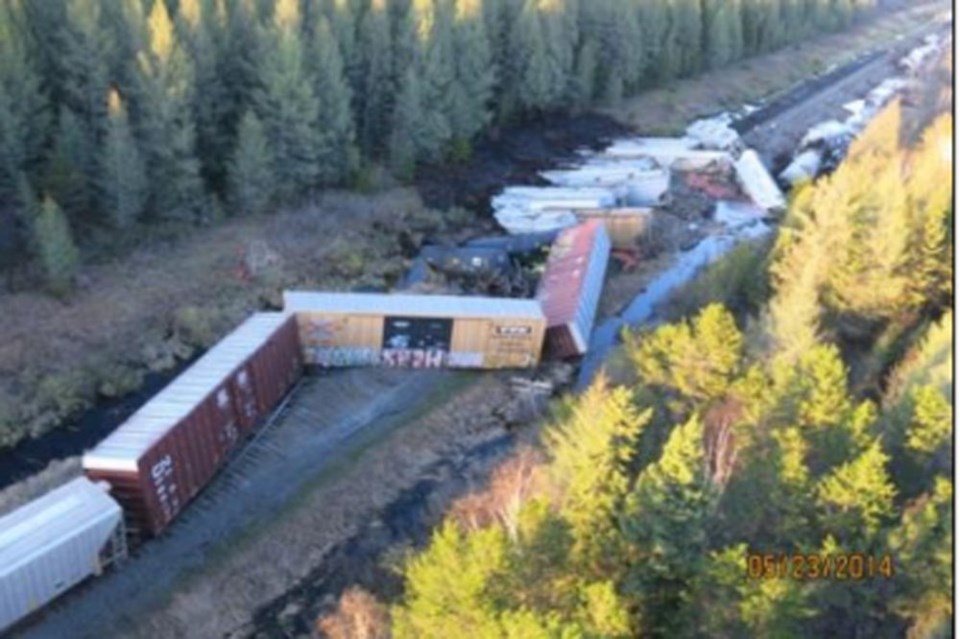Defective ties, fouled ballast and ineffective anchoring of the rail line are being blamed for a May 2014 Canadian National Railway train crash near Fort Frances, Ont.
The Transportation Safety Board of Canada, in a 37-page report issued on Wednesday, say the track structure in the vicinity of the crash was in poor condition, thanks in part to braking of eastbound trains that induced rail creep, a longitudinal shifting of the tracks.
At about 2:07 p.m. on May 23, 2014 the train in question passed over Mile 93.38 at about 77 kilometres an hour, the track buckled beneath the train, derailing 35 cars in its wake.
The TSB also said warm temperatures on May 23, 2014 also played a role, further increasing the compressive stress in the rails, adding further that track maintenance had been delayed on that particular stretch of track, that was already “showing signs of deterioration and no mitigation strategies such as speed reductions were applied.”
The report also says the Canadian National Engineering Track standards were not consistently applied.
“Without proper maintenance and restoration activities, the track condition near Mile 93.38 worsened until the track could no longer restrain the normal operating forces imparted by train brakes and the temperature-related compressive forces that had built up within the rail,” the report finds.
“Despite Canadian National’s company maintenance and Transport Canada’s regulatory inspection activities before the accident, the weakened track structure was not being adequately repaired or being protected by slow orders.”
The report warns if key route corridor assessments are not considered when capital programs are delayed and deferred, rapid deterioration of tracks can occur, increasing risk, also noting the railway does not have train handling guidelines for traversing misalignments like the one that occurred near Fort Frances.
In an email response issued on Friday, CN said it fully co-operated with the investigation.
"CN also conducted a lengthy review of the accident in cooperation with Transport Canada, the rail safety regulator. CN seeks to learn from every accident and to continuously strengthen its Safety Management System (SMS) in order to reduce main track derailments to an absolute minimum," said company spokesman Mark Hallman.
He went on to say CN has committed to address the areas of improvement identified by the TSB.
"As part of its commitment to running a safe railway, CN plans to invest a record $2.9 billion this year in its capital program, of whichC$1.5 billion will be spent on track infrastructure. The infrastructure work will include the replacement of rail, ties, and other track materials, as well as bridge improvements and targeted branch line upgrades," Hallman said.
The repairs have subsequently been made to the track, and deemed to have satisfactorily addressed the unsafe conditions. The track had been inspected as recently as three days prior to the derailment, which led to a fire.
At the time of the crash the train, which originated in Winnipeg, consisted of three locomotives, 119 loaded cars and 45 empty ones. Twenty-one carried dangerous goods.
